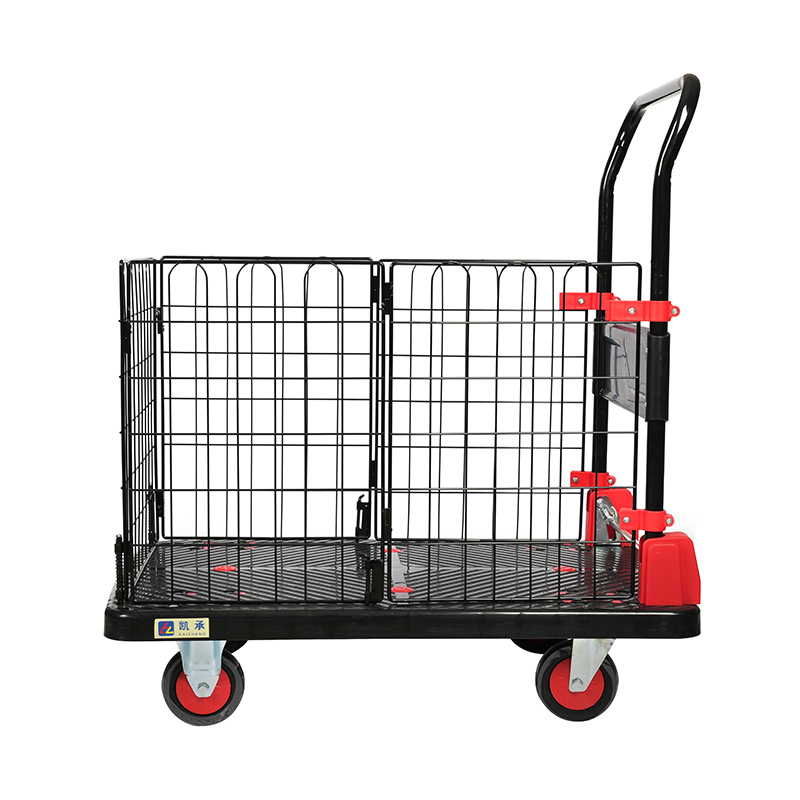Metal foldable trolleys are incredibly versatile and practical tools, essential for transporting goods across a variety of environments. Whether used in warehouses, retail stores, homes, or even outdoors, these trolleys offer convenience and efficiency. However, one of the most critical aspects of their long-term functionality, especially in outdoor or humid environments, is their resistance to corrosion. The presence of moisture, extreme weather conditions, or exposure to chemicals can cause materials like steel and aluminum to corrode, potentially compromising the trolley’s strength and performance. Understanding how well these trolleys resist corrosion, and whether they come equipped with protective coatings, is essential for ensuring their durability and maintaining their usability over time.
Most metal foldable trolleys are constructed from either steel or aluminum, both of which are popular materials due to their durability and lightweight properties. While these metals are strong, their susceptibility to corrosion can vary depending on their exposure to environmental factors. Steel, for example, is particularly prone to rust when exposed to moisture, while aluminum naturally forms a protective oxide layer that can help mitigate corrosion, though it still may suffer from wear in highly humid or salty environments. This is why many manufacturers of metal foldable trolleys apply protective coatings or treatments to their products to enhance corrosion resistance.

One of the most common protective coatings applied to metal foldable trolleys is powder coating. This durable finish is baked onto the surface of the metal, creating a hard, protective layer that resists scratching, fading, and corrosion. Powder-coated trolleys are particularly well-suited for outdoor use or environments where they may be exposed to moisture, such as warehouses with high humidity or areas prone to rain. The coating creates a barrier that helps prevent water from directly contacting the metal surface, thereby reducing the risk of rust and extending the trolley’s lifespan. In addition, powder-coated finishes come in various colors, allowing for both aesthetic appeal and enhanced visibility, which is particularly useful in busy settings.
For trolleys that will face more extreme conditions, such as salty sea air or constant exposure to rain, manufacturers may opt for additional treatments, such as galvanization or anodization. Galvanization involves coating the metal with a layer of zinc, which acts as a sacrificial barrier, preventing rust from forming on the underlying metal. This process is particularly effective in outdoor environments where trolleys might be left exposed to the elements. Anodization, primarily used for aluminum trolleys, creates a thicker oxide layer that not only provides corrosion resistance but also enhances the trolley’s surface hardness, making it more scratch-resistant and durable.
In humid environments, such as cold storage facilities or areas with high moisture levels, it’s especially important that metal foldable trolleys are resistant to corrosion. In these settings, even a small amount of moisture can lead to rust buildup on untreated steel surfaces, which can eventually cause the trolley to weaken. This is why it’s essential to choose trolleys that feature these advanced protective coatings or materials. The added layers not only safeguard against moisture but also protect the trolley from chemical exposure, which is often an issue in industrial or food-related settings. For example, trolleys used in food storage areas might come into contact with cleaning agents or food residues, which can accelerate corrosion if the trolley isn't adequately protected.
Maintenance plays a significant role in preventing corrosion over time. Even if a trolley is equipped with a corrosion-resistant coating, it’s still important to regularly inspect it for signs of wear or damage to the protective finish. Scratches or chips in the coating can expose the metal underneath to moisture and air, increasing the risk of rust. Keeping the trolley clean and dry, especially in areas with high humidity or salt exposure, can also help minimize the chances of corrosion taking hold. Routine checks to ensure that wheels and casters are in good condition will help prevent the trolley from dragging moisture or debris across surfaces, which can contribute to corrosion.


 English
English Español
Español



